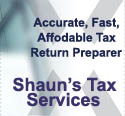The name of this so called "credit" is very misleading. First off, this is not a "credit" but an interest free loan. Those who do not know what a "credit" is on a tax return, it is essentially a dollar for dollar deduction against your Adjusted Gross Income (AGI). Your AGI is used to calculate taxes so the lower your AGI the better.
The first time home buyer credit is new for 2008 which was passed by Congress under the Housing and Economic Recovery Act of 2008.. It applies to home purchases after April 8, 2008 and before July 1, 2009. It is also a refundable credit so if the taxpayer has zero tax liability, the taxpayer can receive money back. The taxpayer can get up to 10% of your house purchase price and the maximum refundable is $7,500. However, the taxpayer must begin to repay 1/15 of credit (max $500) as an additional tax starting on the 2010 tax return (some exceptions such as selling the house may trigger earlier repayment). Tax Form 5405 is used to calculate credit amount.
As you can see, the real problem with this "credit" is that it is an interest free loan. Many taxpayers will most likely forget later down the road that they have to pay it back to the IRS. If forgotten, think of all of the interest and penalty fees that will have accumulated. A savvy individual CAN make good use of this credit since it is an interest free loan, but again, there is no such thing as free money.
If you have a child under the age of 13, or physically or mentally incapable dependent, and have incurred daycare expenses or care expenses, you may be eligible to take the Child and Dependent Care Credit.
Earned Income Credit Eligibility
Many low income families miss out on one very important item on the tax return; that is the Earned Income Credit (EIC). There are a few rules one must meet in order to take this credit:
RULES FOR EVERYONE
* Must have a valid social security number
* Filing status cannot be "married filed separately"
* Must be a U.S. citizen or resident alien all year
* Cannot file Form 2555 or Form 2555-EZ (which relates to foreign earned
income)
* Investment income must be $2,950 or less (ie. interest, capital gains,
etc)
* Cannot be a qualifying child of another person
RULES IF YOU HAVE A QUALIFYING CHILD
* Child must meet the relationship, age, and residency tests
* Qualifying child cannot be used by more than one person to claim the EIC.
RULES IF YOU DO NOT HAVE A QUALIFYING CHILD
* Must be at least age 25 but under age 65 as of December 31.
* Cannot be the dependent of another person
* Must have lived in the U.S. more than half the year
EARNED INCOME AND AGI LIMITATIONS
Your earned income or adjusted gross income must be less than:
* $38,646 ($41,646 for married filed jointly) if you have more than one
qualifying child
* $33,995 ($36,995 for married filed jointly) if you have one qualifying
child, or
* $12,880 ($15,880 for married filed jointly) if you do not have a
qualifying child.
Recovery Rebate Credit More Info
Another new credit for the tax year 2008, the recovery rebate credit (RRC) is a refundable credit meaning if you have zero tax liability, you can still get money back. It is basically the same credit at the Economic Stimulus Payment (ESP) that most taxpayers received during 2008. The RRC provides a second opportunity for taxpayers who did not get the ESP to receive this credit. Click here to learn more.
Real Estate Taxes More Info
Many people who have no mortgage payments whether they bought their homes with cash or are done making payments have no mortgage interests. The problem with this is that the taxpayers are still paying real estate/property taxes. Those who are in this situation can never take advantage of the deduction because their standard deduction is greater than the Schedule A deduction (Schedule A is used when there are mortgage interest, property taxes, state taxes, etc.).
For 2008, this has changed. Taxpayers can now deduct real estate taxes regardless. The maximum amount for single individuals is $500 ($1,000 for Married Filed Jointly).
Here is a list of credits that have been extended through 2009:
* State and Local Sales Tax
* Higher Education Tuition Deduction
* Educator Expenses Deduction
* Additional Standard Deduction for Real Estate Taxes
* Reduction of the Additional Child Tax Credit earning threshold for 2008
from $12,050 to $8,500 which means more people will be able to receive money
back.
Here is a list of tax deduction amounts for 2008:
* Standard Deduction
- Single / Married File Separately = 5,450
- Married File Jointly / Qualifying Widow = 10,900
- Head of Household = 8,000
* Exemptions = 3,500
* Mileage Rates
- Business (Jan-Jun 08) = 50.5 cents | (July-Dec 08) =
58.5 cents
- Medical (Jan-Jun 08) = 19 cents | (Jul-Dec 08) = 27
cents
- Charitable (Jan-Jun 08) = 14 cents | (Jul-Dec 08) =
14 cents
* Child Tax Credit
- Maximum per child is still $1,000
- Additional Child Tax Credit earning threshold is now
$8,500 (lower than last year).
